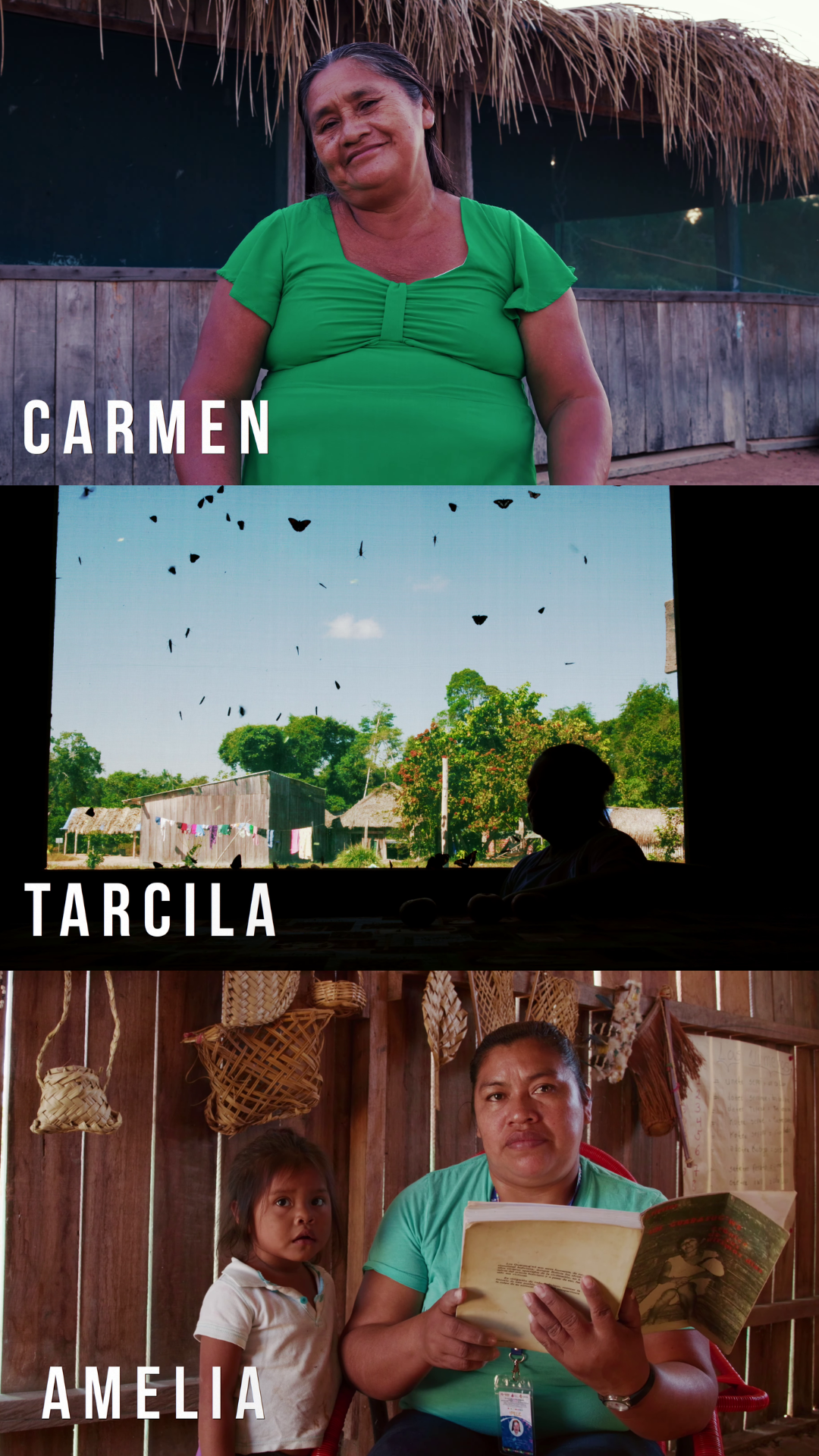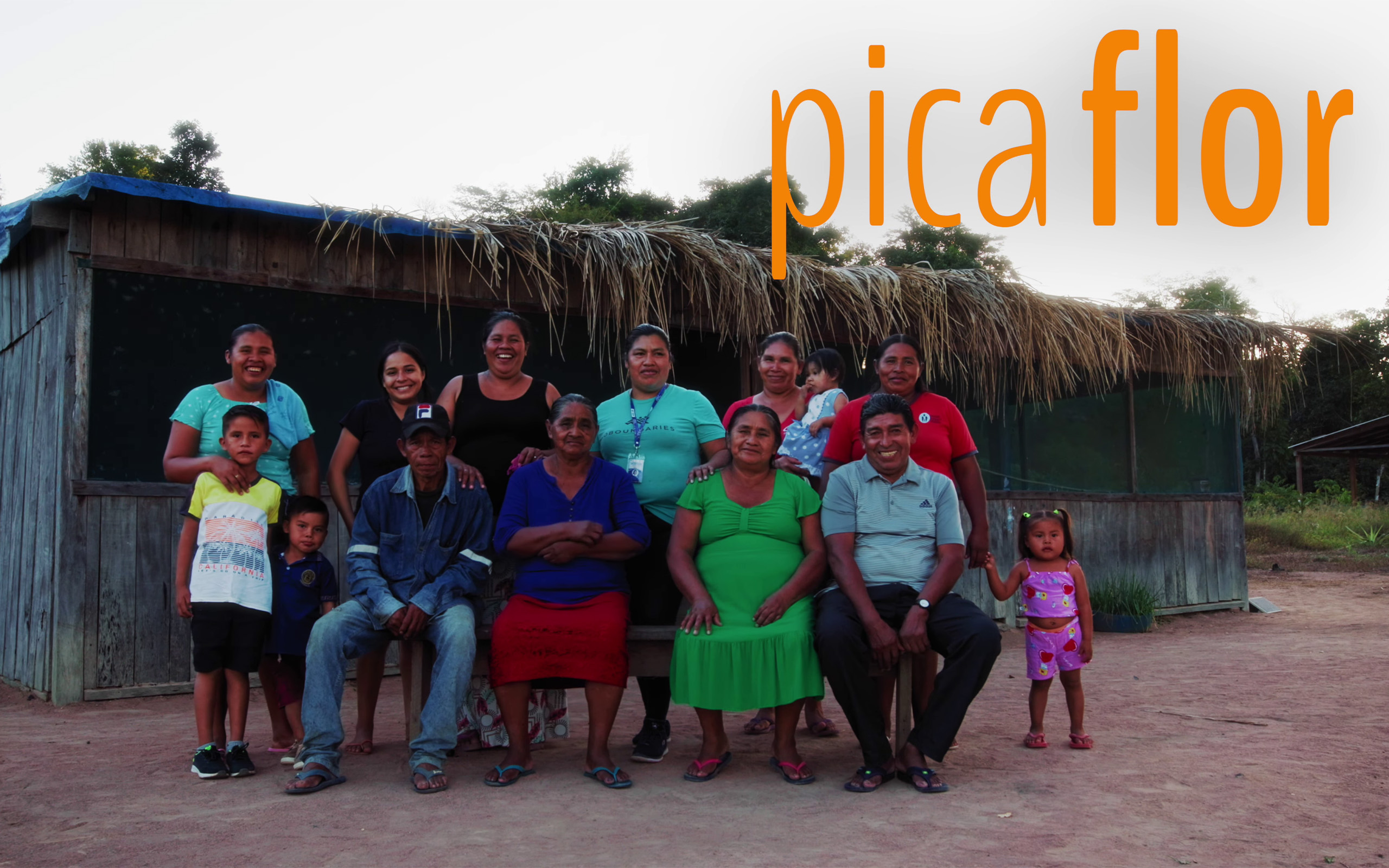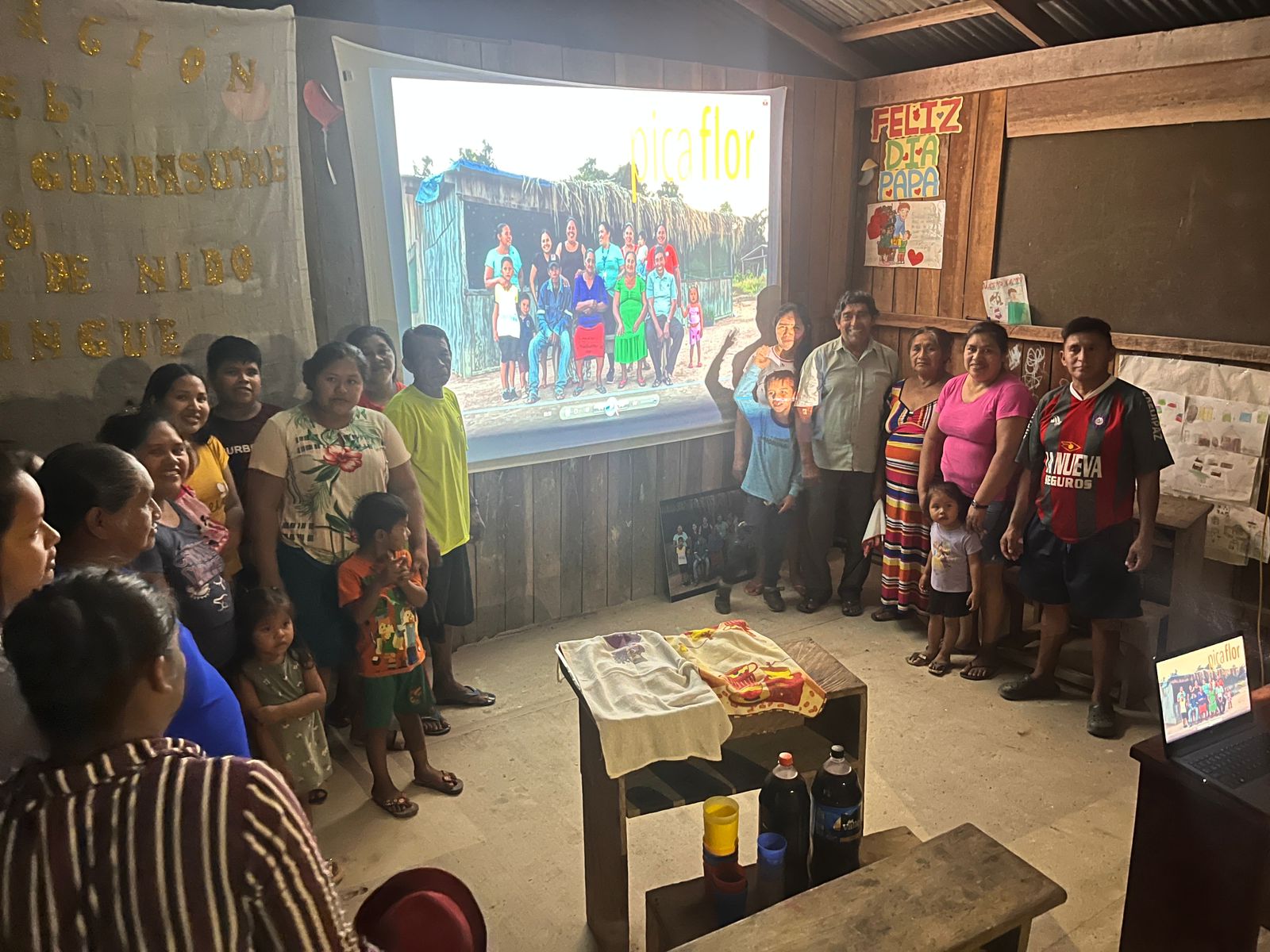TRIBES


TRIBES
A short film by Badanowski.
A sensitive work that takes us on a journey deep into the wilderness, to get to know the daily lives of three women in Guarasu’we territory. The short film created by Javier Badani in Bolivia is a visual journey into the tireless efforts of the Picaflor community to revitalize their language and keep their identity alive.
September 25th, 2023

Lisa Mirella Corti
Journalist
This story is produced and published with financial support from the Google News Initiative News Equity Fund.
Javier Badani had never heard of the Guarasu’we, despite being a journalist for more than seven years and having knowledge of rural areas. He hadn’t even heard anything during his time working at the Ministry of Autonomies with indigenous peoples. It was as if the Guarasu’we nation was invisible in the eyes of Bolivia and the world, but paradoxically, their language is recognized in the Constitution.
It was a year ago, in mid-2022, that he heard they were inaugurating the Institute of Guarasu’we Language and Culture. At that moment, he thought to himself, «Hey, how interesting!» And he began to Google, stumbling upon an old book from 1977 by Jorge Riester titled «Guarasu’we, Chronicles of the Last Days.» As he read, he felt that everything was very apocalyptic, and he thought there was a story there. He saw the book as a glimpse into Riester’s reality at the time, an objective analysis of a culture on the brink of extinction and a language that was nearly impossible to recover. Thanks to the book, he got to know the non-governmental organization «Apoyo Para el Campesino-indígena del Oriente Boliviano – APCOB,» founded by Riester in 1982, precisely to prevent the predicted demise he depicted in his book and research by visiting indigenous peoples in danger of extinction. Through this link with APCOB, he was able to gain deeper insight into the present-day Guarasu’we compared to what Riester had portrayed.
From 1977 to 2023, many things have changed. In theory, the Guarasu’we language and culture are recognized as one of the 36 official languages in Bolivia’s Constitution. However, in practice, it is considered by the Plurinational Institute for the Study of Languages and Culture (IPELC) to be in critical condition, spoken only by grandparents and infrequently at that.

Carmen, Tarcila, and Amelia are the protagonists of the story.
The non-fiction short film titled «Picaflor,» created as part of the project «Guarasu’we: the Indigenous Nation that Refused to Disappear under the Leadership of Its Women,» selected in the 1st call for cultural productivity and artistic creation by the Center for Cultural Revolution, provides a visual glimpse of the present, a snapshot of Guarasu’we life. In 2023, despite being recognized by the state, they continue to struggle to maintain their identity, revitalize their culture and language. Through the voices of the protagonists, Carmen, Tarcila, and Amelia, the documentary reflects the daily lives of three women who have been pioneers in creating the young community called Picaflor, home to about 20 families. In 2020, this community was recognized by the municipality of San Ignacio de Velasco as an Indigenous Community of the Guarasu’we Nation. Picaflor is their territory, a place of peace, and the home of the next generation of Guarasu’we people. It is a space where women take pride in working to rescue their language and assert their constitutional rights. For Javier, this is a corner of the country resisting state neglect, a place unknown to many Bolivians, especially those who are unaware of what happens in rural areas.
Picaflor is a young community with deep roots, like a sapling. Carmen, Tarcila, and Amelia are descendants of Miguel Frey, the last Grand Captain of Guarasu’we, who lived with his large family and wives more than three decades ago in a vast territory known as Campo Grande, on the banks of the Iténez River, between Brazil and Bolivia. Today, the extended Guarasu’we family is scattered in small families along the Iténez River, between Brazil and Bolivia, and around the Municipal Protected Area of Bajo Paraguá.
«I’ve been greatly impressed by how little we know about rural areas. This could shed light on these internal ruptures and tensions in the country. With the state largely absent from much of rural areas, ‘Bolivianity’ is nothing more than a statement,» says Javier.
From the beginning, Javier knew he didn’t want to create an anthropological video or tour. What he wanted was to reflect the work of women. Telling stories is something he is passionate about. Javier is known as Badanowski, the founder of La Caraja, a digital content production company that works with civil society organizations and collectives on human rights issues.
Based on what he had heard about Picaflor, it was the women who were the wise ones. A call for cultural productivity and artistic creation from the Center for Cultural Revolution was announced, including a section for audiovisual projects. Javier won by presenting his project «Guarasu’we: the Indigenous Nation that Refused to Disappear under the Leadership of Its Women.»

Generations of Carmen’s family in one picture.
Reaching Picaflor is not easy; it’s an odyssey of more than 17 hours from Santa Cruz de la Sierra, a journey through the northeastern Chiquitania region until entering the Municipal Protected Area of Bajo Paraguá, a bumpy and muddy road hugged by the dense trees on both sides. Javier ventured there with two colleagues, and that’s when his filming process began, spending five days in the forest, getting to know and learn.
After months of editing in the city of La Paz, Javier took on the mission of presenting the short documentary where it was born, in the Picaflor community. Once again, he had to embark on the long journey. The premiere took place on September 10th at the community’s school. Due to the lack of electricity, the projector operated on the electrical power generated by a portable motor. Suddenly, when the time came, everything was packed. Javier recalls seeing many children, mothers with their babies, and the protagonists.
«They were moved, entertained, and hardly heard anything; they saw themselves reflected, laughed at what they were doing on the screen, and pointed at each other amid laughter,» Javier recalls.
This is how Badani remembers the emotional moment of the grand premiere. The day after the screening, he hit the road again, this time to the city of La Paz, where he had his second presentation on September 13th at the Casa Museo Inés Córdova-Gil Imaná.
The sensitive and carefully polished short documentary is a must-see work for delving into parallel realities in Bolivia and learning from them. The work is available in its entirety on La Caraja’s YouTube page.
It’s a 30-minute audiovisual work in which the director aims, as he does in many of his projects, to plant the seed of curiosity, so that people will say, «What is this?» and want to investigate further.
***

The short film premiered in Picaflor.
Te contamos desde el interior de los escenarios de la realidad, iluminados por el faro de la agenda propia, el texto bien labrado y la riqueza poética del audiovisual y de la narrativa sonora, combinaciones perfectas para sentir el corazón del medioambiente y de los anónimos del Planeta.
